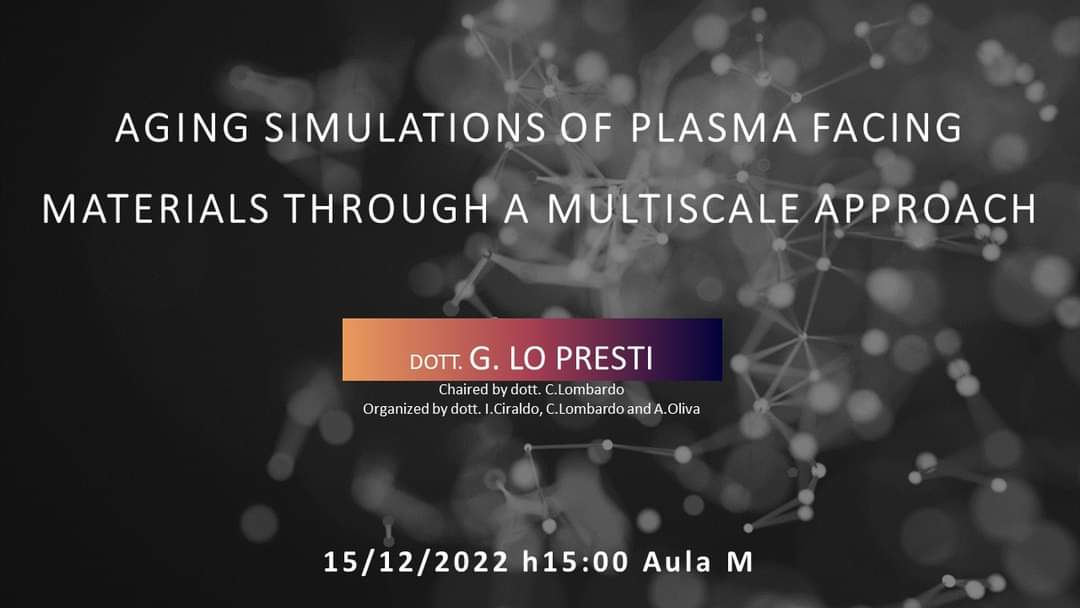Aging simulations of plasma facing materials through multiscale approach

Giorno 15 dicembre 2022, con inizio alle ore 15:00, presso l'Aula M del DFA, il Dott. Giorgio Lo Presti terrà un seminario dal titolo Aging simulations of plasma facing materials through multiscale approach.
Il seminario è organizzato dai dottorandi del Dottorato di ricerca in Fisica.
Tutte le persone interessate sono invitate a partecipare.
Abstract. To achieve the goal of energy production from fusion processes, nowadays, nuclear physics requires strong knowledge of plasma physics and materials science. From this crossover of knowledge, various projects, prototypes, and plants are born to test our control over fusion plasmas at various stages.
Here we present initially a general introduction to the concept of plasma, and its application in reactor design. A brief overview of the main facilities completes the introduction. The most important ongoing research questions and the presentation held in NuMat 2022 "Aging simulations of plasma facing materials through a multiscale approach", which is based on the research work (year 2021/2022) carried out by CNR-IMM Catania in collaboration with main Italian energetic companies and the University of Catania, are then presented.
Aging simulations of plasma facing materials through a multiscale approach
Understanding the fusion reactors physics is critical to designing the energy supply of the near future. To achieve this goal, several issues, with both scientific and engineering character, must be overcome. One of these concerns the evolution in time of the plasma facing materials (PFM), in terms of erosion and maintainability of physical characteristics of conductivity and hydrogen permeation.
Due to the difficult direct monitoring of the PFM aging, predictive model, based on multiscale simulation approaches, seems necessary to estimate properly the phenomena leading to PFM microstructural modification in this critical environment.
We present a simulation tool able to predict the microscopical evolution of tungsten as PFM providing fundamental predictions of scaling laws for continuum models. It is based on the sequential combination of a plasma scale continuum global model and feature scale particle-like Kinetic Monte Carlo (KMC) simulations.
The zero-dimensional global plasma code allows the thermodynamic and stoichiometric description of ionized gases for stationary and time dependent solutions, together with the sheet potential evaluation. It considers the surface physics in terms of reactions and geometrical corrections and can be used for linear device systems.
The three-dimensional KMC simulates the sequences of surface and near-surface structural modifications caused by plasma particles moving from plasma regions and impinging through a facing slab. After the impingement, particles can migrate or bind the lattice of the PFM, which (as case of study) has been fixed as body-centered cubic tungsten (W-BCC).
Lattice reference, initial energy and stoichiometry distribution therefore strongly determine the aging of the facing materials. Such dependences can lead to possible extension of the code considering the long-term evolution of defects. Furthermore, different chemistry or lattice geometries will extend the aging prediction analysis to new materials, while improvements in ion flux angular distribution will be critical to refine the sputtering yield.